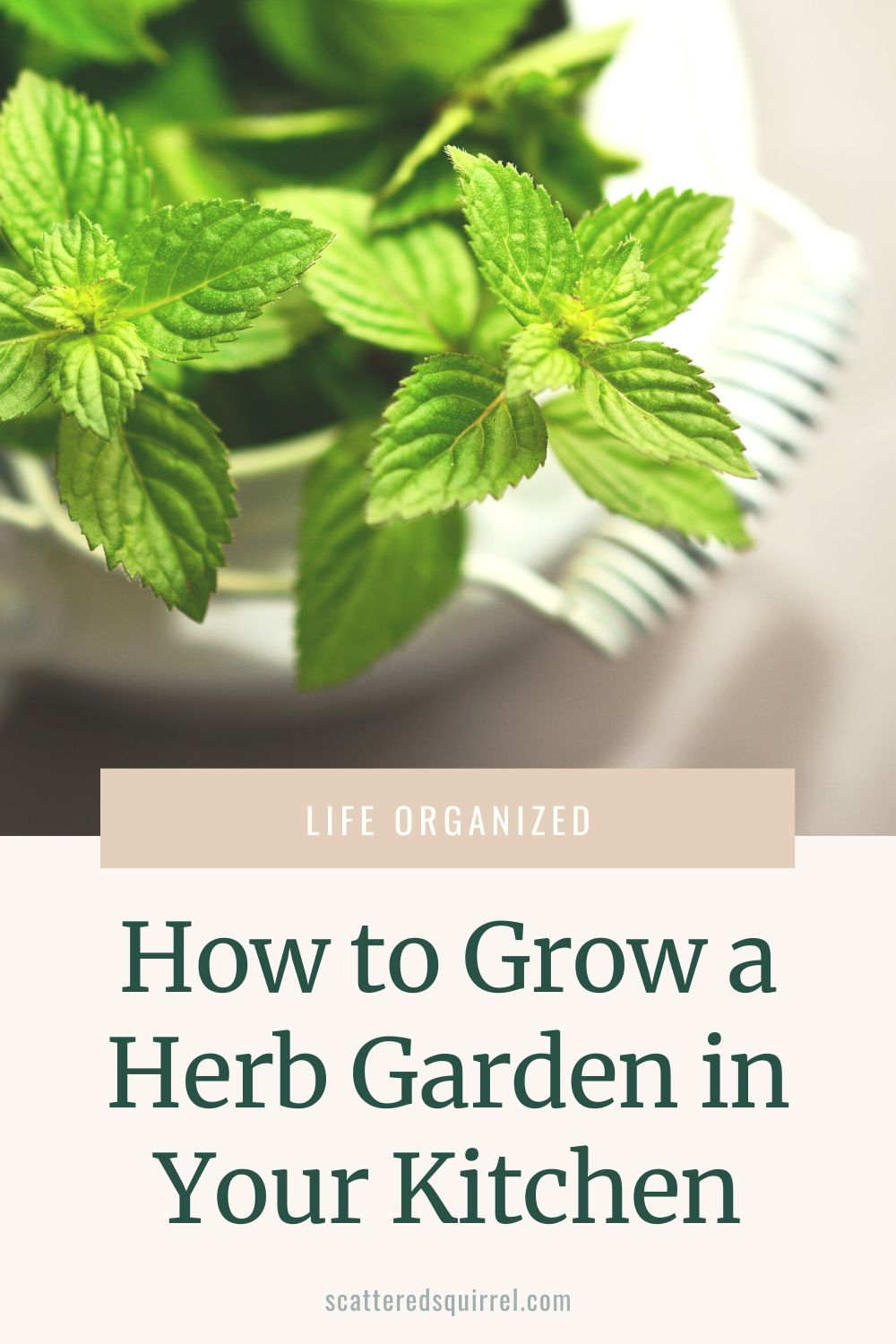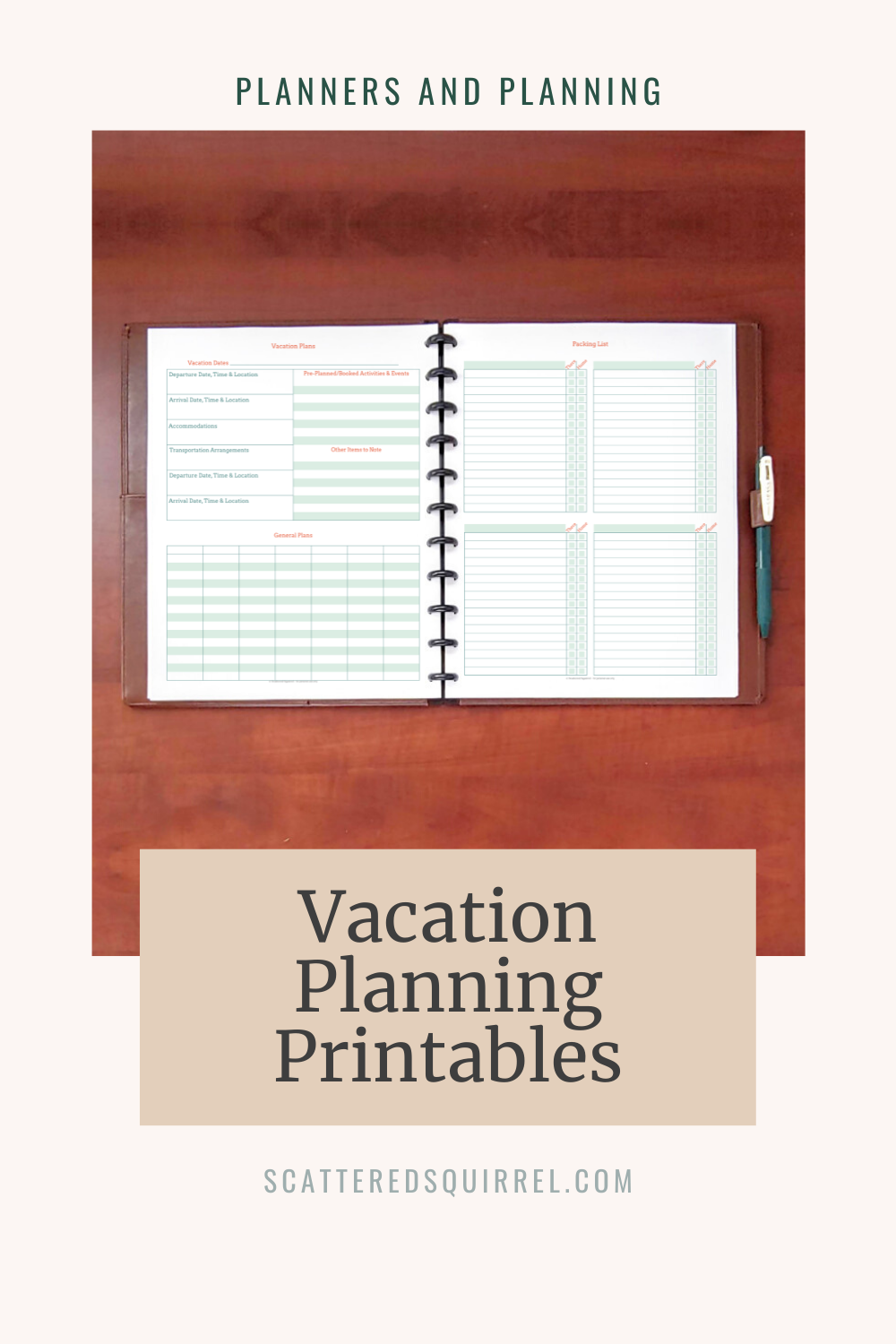How to Grow a Herb Garden in Your Kitchen
Something my husband and I have always wanted to do was start an indoor herb garden. I don’t know the first thing about growing herbs, which makes starting one a little challenging. That’s why, today, I’m happy to be able to be opening up the blog to a guest post on this very subject. I hope you enjoy Annie’s article as much as I did.
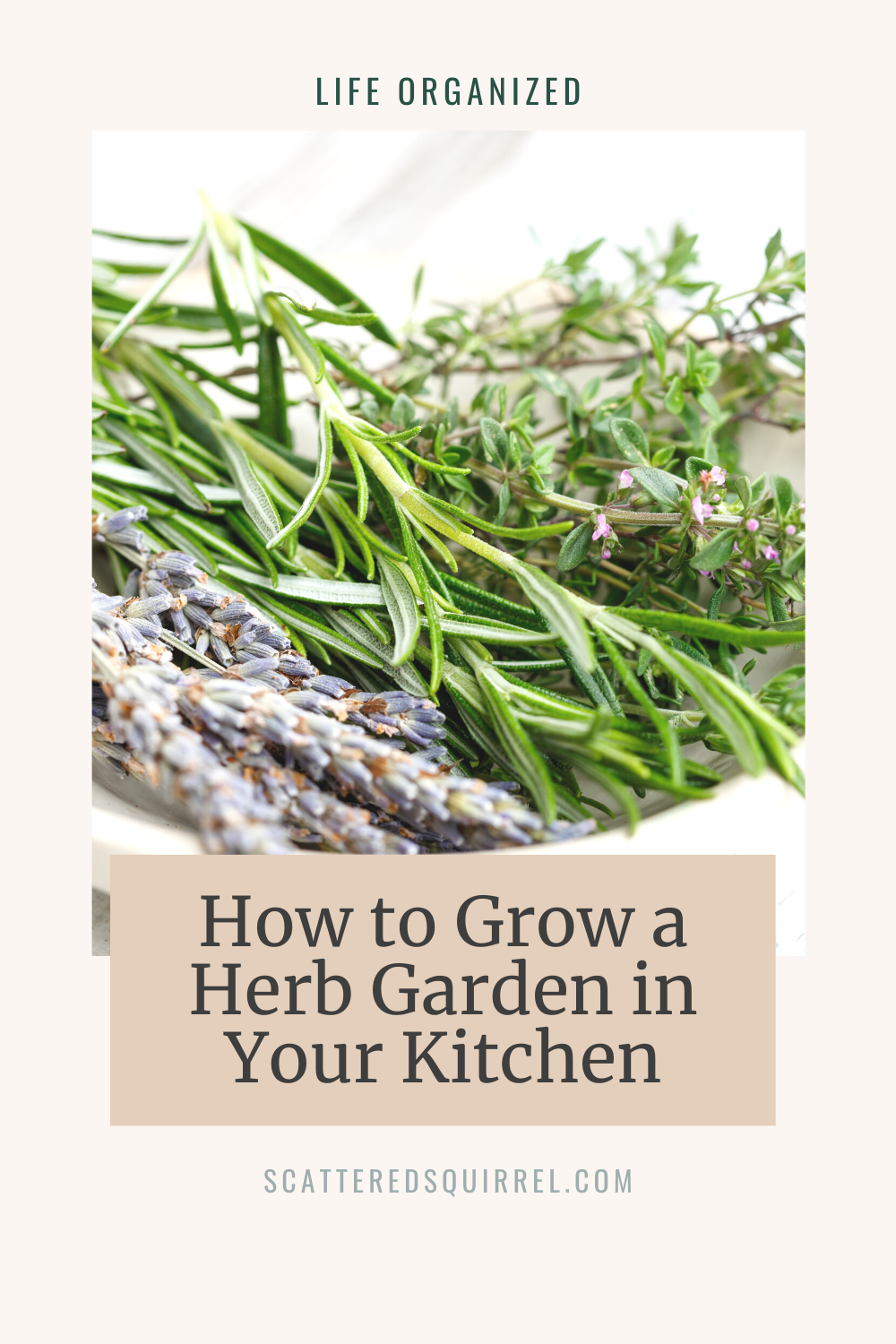
Growing herbs at home is a fun and easy way to make sure your favourite flavours are within arm’s reach all year. With some simple setup and a few easy starter plants, it’s easy to put down roots with a kitchen herb garden
Starting Your Indoor Herb Garden
An indoor herb garden in your kitchen can cut down on grocery runs, make meal planning easy, and provide a rustic natural touch to your decor, as well as a year-round bounty of fresh herbs.
What you’ll need:
- Starter pots or trays for your herbs
- Seed packets or young plants, depending on variety
- Potting mix – make sure it’s high quality!
- Fertilizer, as needed
After you’ve picked up your materials, follow these tips to get started:
- Find the sunniest spot in your kitchen on a windowsill or the counter. Herbs need plenty of sun, especially when they’re grown inside.
- Trim your herbs to encourage growth.
- Water with care. The warm temperatures in your home will make it easy to grow herbs inside no matter the season, but heat may also make the soil dry out faster. Be sure to keep an eye on your watering schedule.
- Read and follow the directions on your seed packets and fertilizer.
- Have a cat? Be careful – wandering kitties have a propensity to knock over your plants, and certain herbs can be toxic to animals if ingested in large quantities.
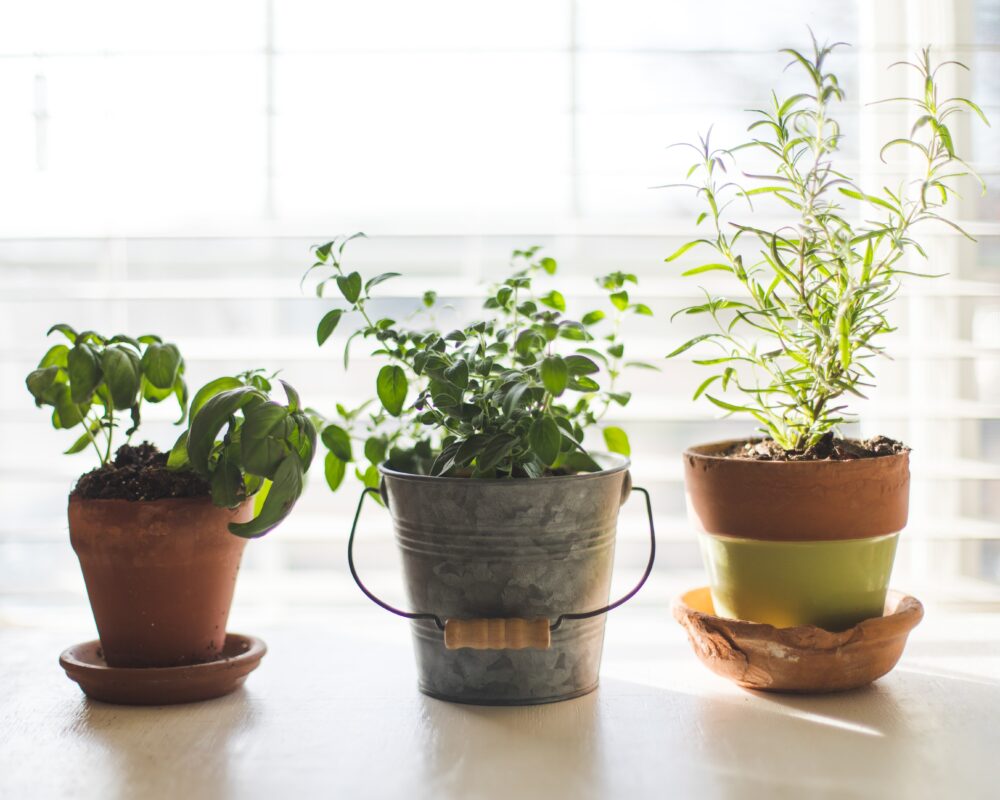
Top 5 Easiest Herbs to Grow Indoors
Once you’re ready to go, start your herb garden off right with 5 of the easiest herbs to grow indoors.
1. Chives
Chives is the perfect starter herb – it’s a hardy plant that grows year-round and can be used in everything from soups and salads to egg dishes.
This perennial can handle a little more shade than other herbs, so if you’re still figuring out where to start your indoor garden, growing chives is a great place to start.
Sun: Chives will thrive in full sun but tolerate light shade. Try placing it in a south-facing window for optimum sun.
Water: Water when soil feels dry to the touch.
Care Tips: Chives will bloom into a flower that allows it to self-sow in the wild, but grown indoors, you can trim it off to direct more nutrients to the plant.
How to Grow: Chives are often grown from cuttings, but can easily be started from seed. If you’re growing indoors from seed, keep the pot in a dark spot with temperatures between 60 and 70 degrees until the sprouts reach around 6 inches.
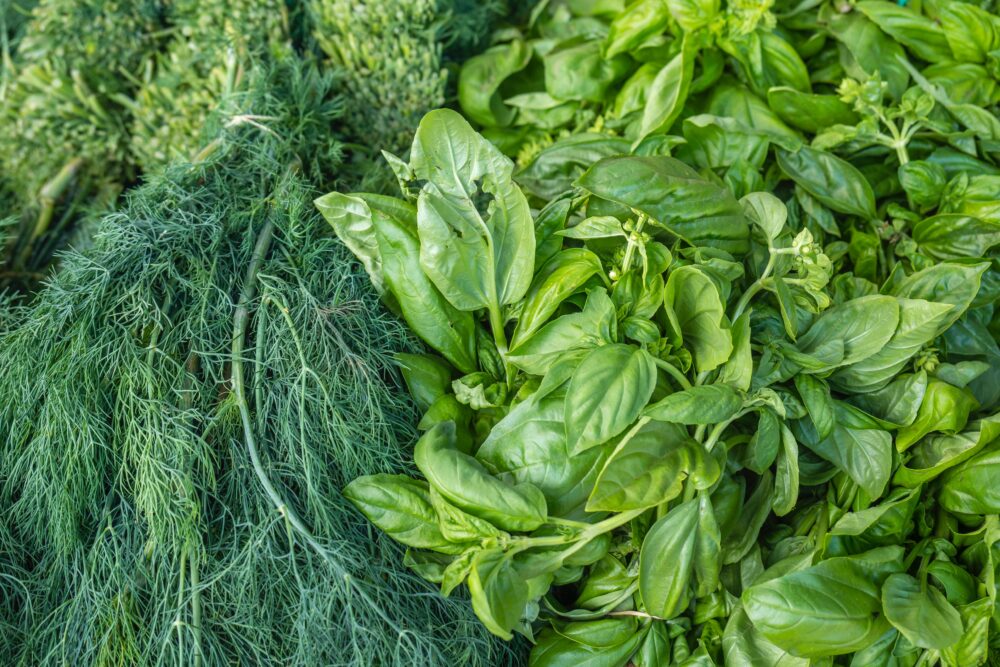
2. Basil
Basil is easy to start from seed and all parts of the plant are edible, from the familiar leaves to its delicate white flowers. It can be dried for use as a spice or added fresh to pizzas, Caprese salads, and more.
End up harvesting more than you can handle? Use up your basil with a batch of fresh homemade pesto!
Sun: Full sun
Water: Keep soil moist but not soggy.
Care Tips: Encourage more leaves to grow and control flowers by regularly pinching or snipping back a third to half of the leaves at a time.
How to Grow: If growing from seed, keep starter pots at around 70 degrees and mist with water after planting, then keep them dry until they sprout. Be wary of basil downy mildew and discard any plants affected by it.
3. Rosemary
Rosemary is native to the Mediterranean, meaning the balmy temperatures indoors create the perfect environment for it to grow. In addition to delicious flavours, it offers a lovely scent for your home, and it’s possible you’ll see tiny blue flowers appear in December or January.
Sun: In hotter climates, rosemary prefers partial shade, but 6-8 hours of sun is best indoors.
Water: Keep soil moist, and don’t let it dry out.
Care Tips: Snip rosemary selectively, as bigger is better for this slow-growing plant.
How to Grow: Unlike other herbs, rosemary is a woody shrub, which will take longer to sprout. If grown from seed it will take two to three weeks to germinate.
4. Parsley
Parsley leaves can be used as a garnish for starchy side dishes, like potatoes and rice, as well as seasoning for various meats and stews. The seeds can be used in cooking, too, and have a slightly stronger flavour.
Sun: Like chives, parsley requires less light than other herbs, so window placement is fine.
Water: Water when soil is dry to the touch.
Care Tips: Other than intermittent harvest for use in cooking, parsley does not need to be trimmed.
How to Grow: Parsley is biennial and can be a challenge to start from seed, so buy cultivated plants from a nursery or grocery store to start them in your garden.
5. Thyme
Like rosemary, thyme is a woody shrub, and its leaves can be stripped from the stalks for use in carrot dishes, lemon thyme sauce, or the bouquet garni spice trinity alongside parsley and bay leaf. Some recipes may even call for stewing whole stalks of thyme in soups or sauces.
Sun: Full sun
Water: Water when soil is dry
Care Tips: Thyme is easy to take care of and grows quickly. Harvest it often by pinching off leaves to cook with to encourage more growth.
How to Grow: Thyme is easy to grow from seed but will take a while to sprout. Young plants can be bought and planted in your herb garden for faster results.
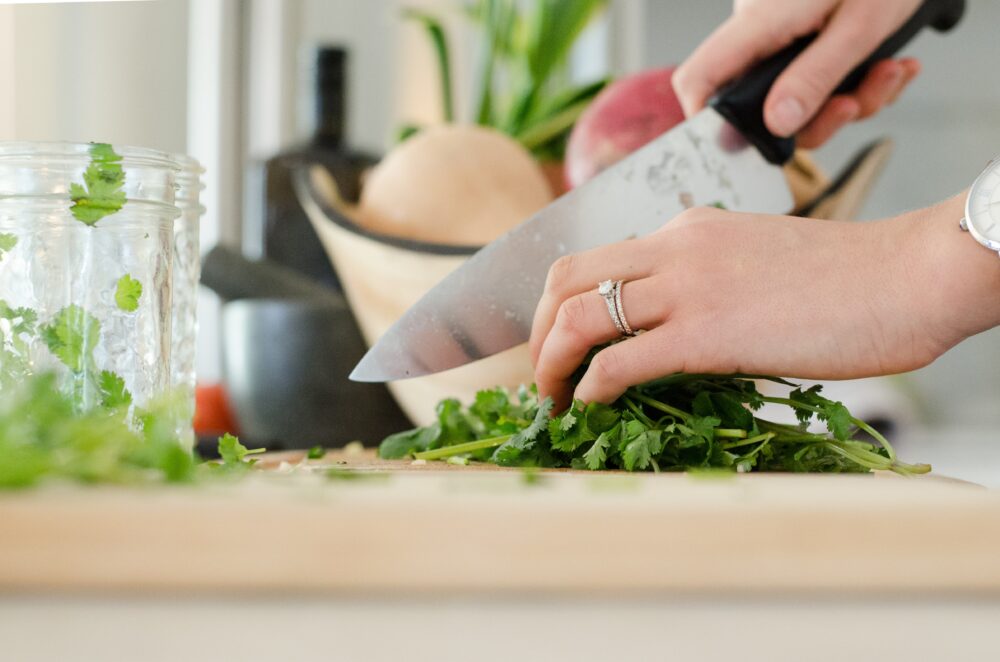
A Natural Touch
There are plenty of benefits to starting your own herb garden indoors, and luckily, it’s simple to set one up. Use this handy guide to the easiest herbs to grow at home, and watch your kitchen garden grow!
Annie Parnell is a freelance writer and audio producer based in Richmond, Virginia. She is passionate about gardening, outdoor recreation, sustainability, and all things music and pop culture.
